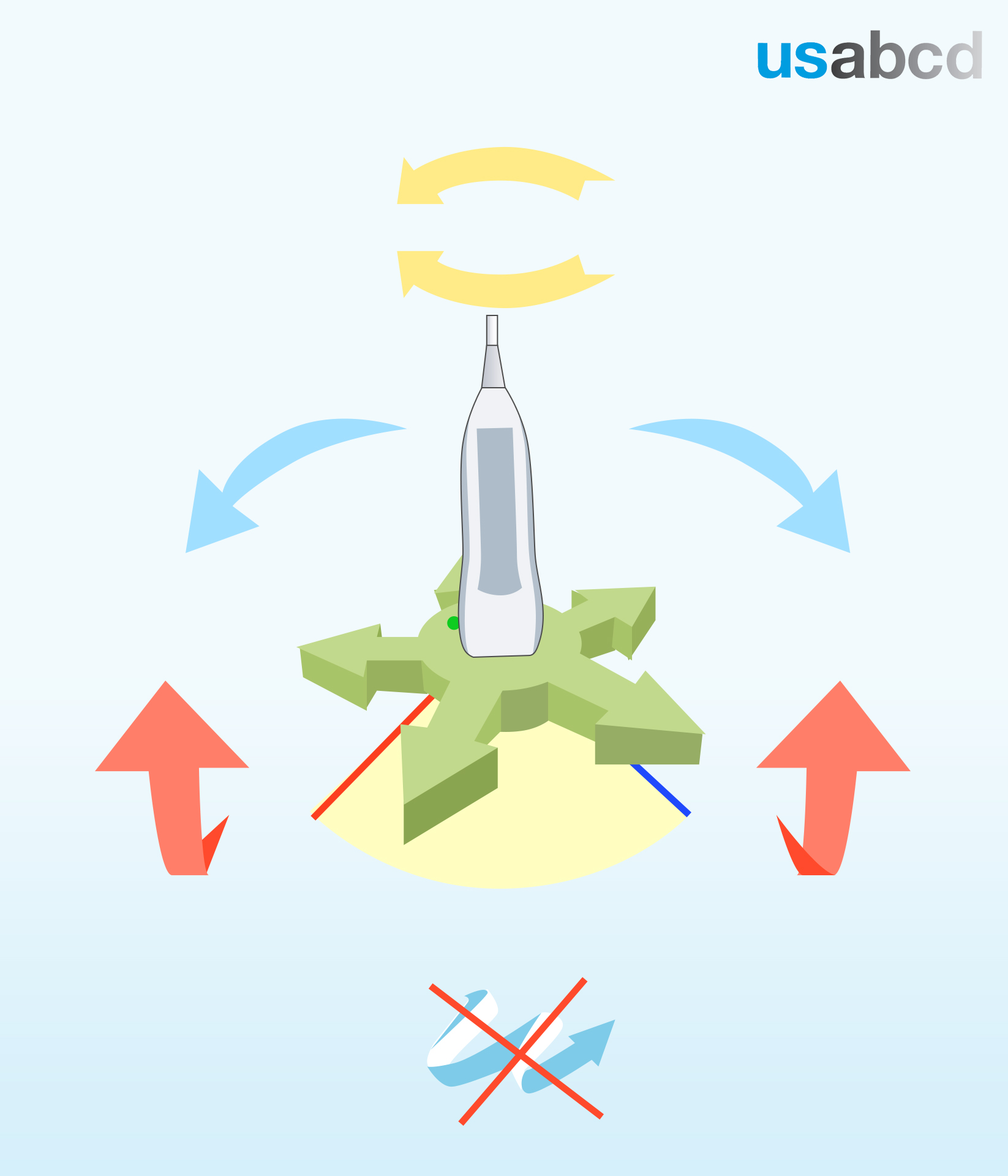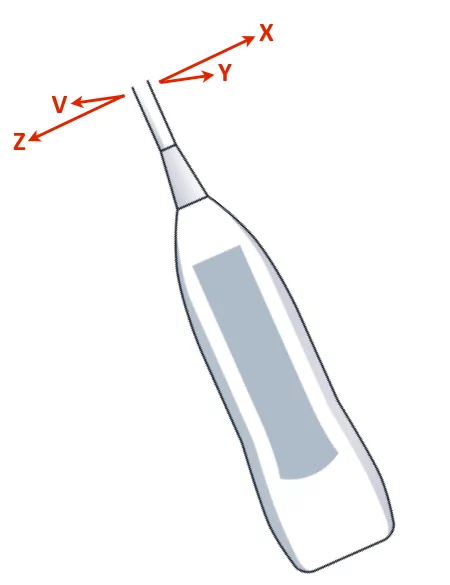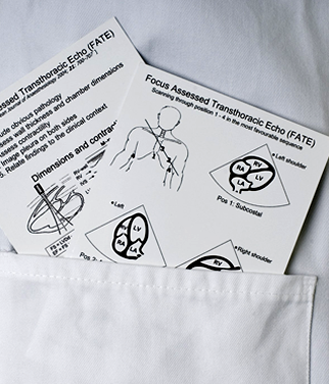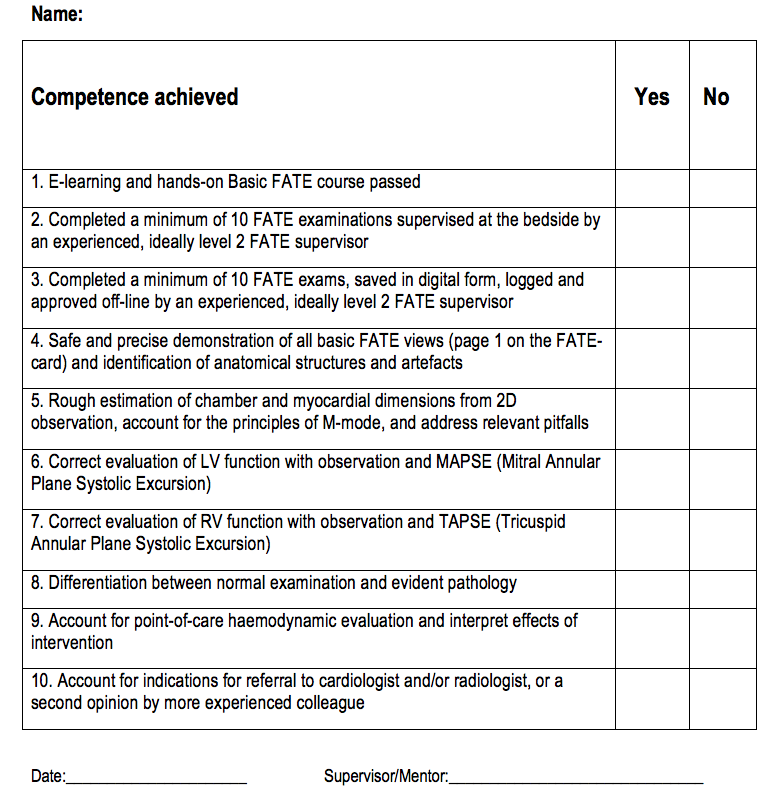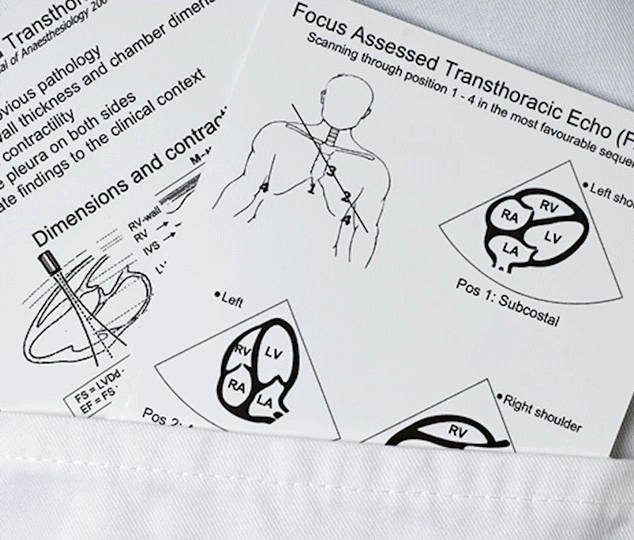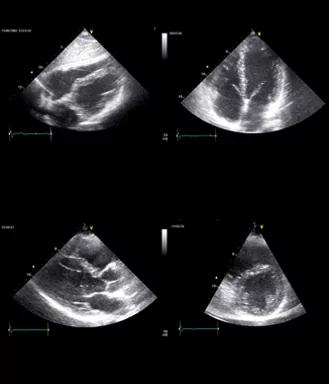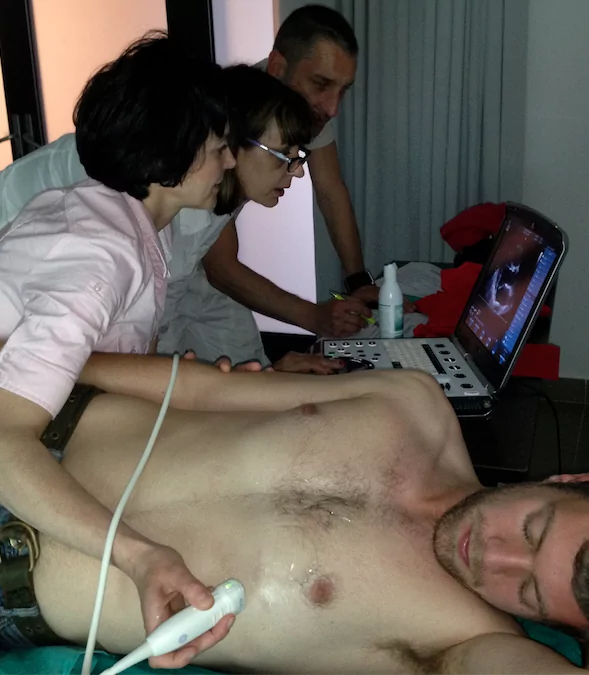A terminology to describe the movement of the probe during scanning is important in order to optimise the image
During the workshop it makes it easier for the supervisor to give instructions without touching the probe which is crucial for the novice in order to achieve practical skill
There are many available descriptions of the method of manipulation of the probe
We recommend using:
1. rotate
2. tilt
3. slide
These movements are applicable to all scanning locations
As a novice – always move the probe in only one direction at a time
